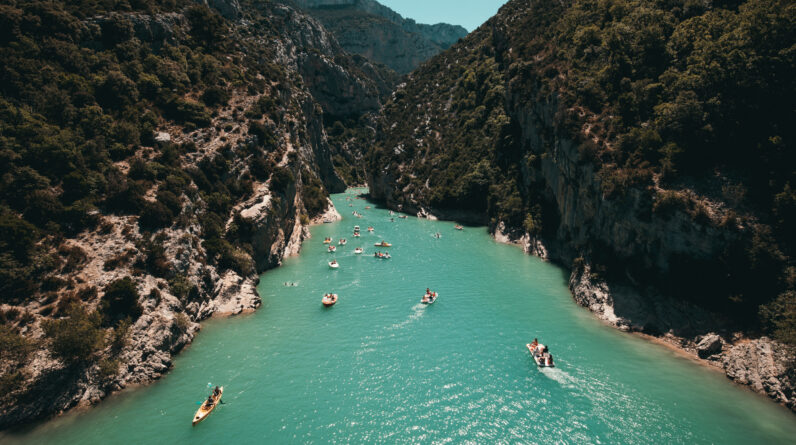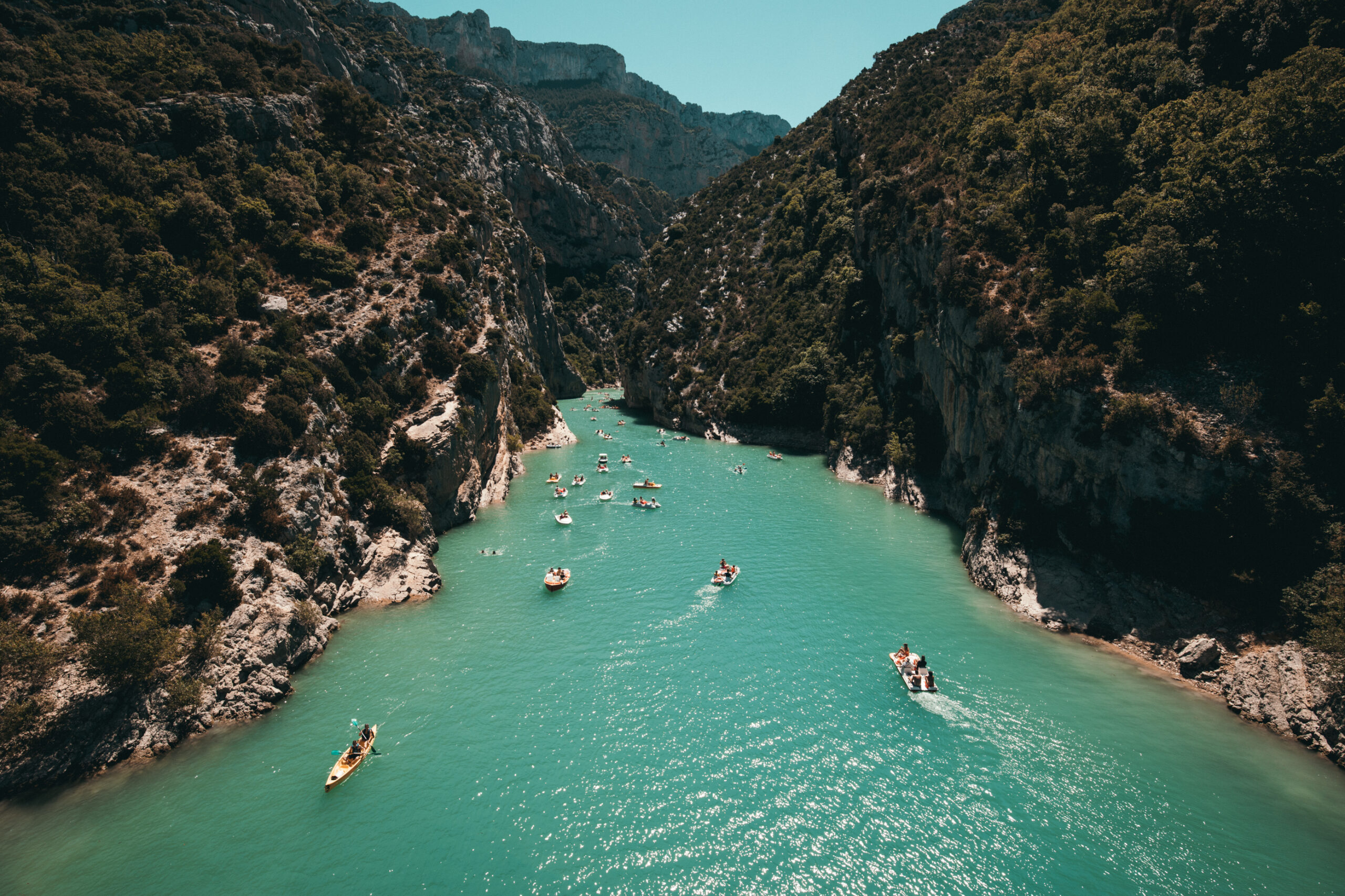
If you’re an adventure seeker looking for the thrill of navigating through turbulent rapids, then look no further! In this ultimate guide, we will take you on a journey to explore the best inflatable kayaks for tackling whitewater. Whether you’re a beginner or an experienced paddler, we’ve got you covered with expert insights, tips, and recommendations to help you choose the perfect kayak for your next adrenaline-filled escapade. So get ready to plunge into the exciting world of whitewater kayaking and discover the ultimate companion for your wild river adventures!
The Ultimate Guide to the Best Inflatable Kayaks for Whitewater

Types of Inflatable Kayaks
Self-bailing kayaks
Self-bailing kayaks are designed with small drain holes or ports that allow water to flow freely out of the kayak. This feature is particularly useful for whitewater adventures as it helps to keep the kayak buoyant and prevent it from flooding. Self-bailing kayaks are commonly used in rapid-filled rivers and are a great option for those looking for an exhilarating whitewater experience.
Sport kayaks
Sport kayaks are versatile and well-suited for various water activities, including whitewater rafting. They are designed to accommodate one person and offer a good balance between stability and maneuverability. Sport kayaks are typically lightweight and compact, making them easy to transport and store.
Sit-on-top kayaks
Sit-on-top kayaks are popular for their user-friendly design and ease of use. These kayaks have an open, cockpit-style seating area, allowing you to sit on top rather than inside the kayak. Sit-on-top kayaks are a great choice for beginners or those who may feel claustrophobic in traditional kayaks. They offer excellent stability and are ideal for recreational paddling in calm rivers or lakes.
Tandem kayaks
Tandem kayaks are designed to accommodate two people, making them perfect for paddling with a partner or friend. These kayaks provide a great bonding experience and are often used for recreational purposes. Tandem kayaks can also be used for whitewater adventures, but it is important to consider the experience level of both paddlers to ensure safety and stability.
Material and Construction
PVC vs. Hypalon construction
When it comes to inflatable kayaks, two common materials used for their construction are PVC (Polyvinyl Chloride) and Hypalon. PVC is a durable, affordable, and widely-used material that provides excellent resistance to punctures and abrasions. Hypalon, on the other hand, is known for its exceptional resistance to UV rays and chemicals, making it a great choice for kayaking in extreme conditions. Both materials have their own advantages, so it’s important to consider your specific needs when choosing the construction material.
Denier rating
The denier rating refers to the thickness and strength of the fabric used in the construction of the kayak. A higher denier rating indicates a stronger and more durable kayak. For whitewater kayaking, it is recommended to choose a kayak with a higher denier rating to ensure it can withstand the rough conditions and potential impacts.
Seam construction
The quality of the seams is crucial for the overall durability and performance of an inflatable kayak. Most inflatable kayaks feature heat-welded seams, which provide a stronger bond compared to glued seams. Heat-welded seams are less prone to leakage and can withstand the pressure and movement of paddling in whitewater.
Air chambers
Inflatable kayaks are typically constructed with multiple air chambers. These chambers provide added safety by ensuring that even if one chamber gets punctured, the kayak will still remain afloat. It is recommended to choose a kayak with multiple air chambers for whitewater kayaking to minimize the risk of sinking.
Weight Capacity and Size
Single vs. tandem kayaks
Before choosing an inflatable kayak, consider whether you prefer paddling solo or with a partner. Single kayaks are designed for one person and are generally lighter and more maneuverable. Tandem kayaks, on the other hand, can accommodate two people and are ideal for shared adventures. Choosing the right size kayak ensures that you have enough space and weight capacity for a comfortable and safe paddling experience.
Weight capacity considerations
Each inflatable kayak has a specific weight capacity that indicates the maximum weight it can safely support. It is important to consider not only your own weight but also any additional gear or equipment you plan to bring along. Exceeding the weight capacity can affect the kayak’s stability and performance, so it’s essential to choose a kayak that can handle your weight and any additional load.
Length and width
The length and width of an inflatable kayak affect its stability, maneuverability, and speed. Longer kayaks generally offer better tracking and faster speeds, making them suitable for longer distances and open water conditions. On the other hand, shorter kayaks are more maneuverable and better suited for narrow and winding rivers. Consider your paddling preferences and the type of whitewater you’ll be encountering when choosing the length and width of your inflatable kayak.
Stability and Maneuverability
Tracking ability
Tracking refers to the kayak’s ability to maintain a straight course without excessive veering from side to side. Kayaks with good tracking ability are easier to paddle and require less effort to stay on course. For whitewater kayaking, maneuverability is often prioritized over tracking, as you’ll need to navigate tight turns and rapids. However, it’s still important to choose a kayak with decent tracking ability for stability during calm sections of the river.
Primary stability
Primary stability refers to how stable a kayak feels when it is stationary or in calm water. Kayaks with higher primary stability have a wider hull and provide a more stable platform for beginners or those who prefer a relaxed paddling experience. However, increased primary stability often sacrifices secondary stability and maneuverability, so it’s important to find a balance that suits your skill level and whitewater needs.
Secondary stability
Secondary stability refers to the kayak’s ability to remain stable when tilted or leaning to the side. Kayaks with good secondary stability are less likely to tip over during rapid maneuvers or waves. This is particularly important in whitewater kayaking, where quick and sharp turns are common. A kayak with good secondary stability gives you more confidence to navigate challenging rapids without fear of capsizing.
Ability to handle rapids
Whitewater kayaking involves navigating through rapids, waves, and obstacles. It is essential to choose an inflatable kayak that can handle these challenging conditions. Look for a kayak with good stability, maneuverability, and durability to ensure a safe and exciting whitewater experience. Additionally, kayaks designed specifically for whitewater often have reinforced hulls and additional safety features to withstand the rigorous demands of the sport.

Inflation and Deflation
Included pump quality
Inflating and deflating an inflatable kayak can be a time-consuming task without the proper equipment. Many inflatable kayaks come with a hand pump or foot pump for inflation. Make sure to choose a kayak that includes a high-quality pump that is efficient and easy to use. Consider the size and capacity of the pump to ensure it can inflate your kayak within a reasonable amount of time.
Inflation time
The time it takes to inflate an inflatable kayak can vary depending on the size, design, and quality of the kayak and pump. Some kayaks can be fully inflated within minutes, while others may take longer. If you plan on frequent trips or have limited time, consider a kayak that can be inflated quickly to maximize your time on the water.
Deflation time
Deflating and packing up your inflatable kayak should also be a relatively quick and easy process. Look for a kayak that has quick-release valves or other features that allow for fast deflation. This will save you time and effort when it comes to disassembling and storing your kayak after a day of whitewater adventure.
Quick-release valves
Quick-release valves are designed to expedite the inflation and deflation process of an inflatable kayak. These valves allow for fast and efficient airflow, enabling you to quickly set up or pack up your kayak. Having quick-release valves is especially beneficial when you’re on the go and need to inflate or deflate your kayak in a short amount of time.
Portability and Storage
Weight when deflated
One of the advantages of inflatable kayaks is their portability when deflated. Before making a purchase, consider the weight of the deflated kayak as you may need to carry it to and from your vehicle or hiking trails. Lighter kayaks are generally easier to transport and maneuver, especially if you plan on embarking on solo adventures.
Folded size
In addition to weight, the folded size of an inflatable kayak is another important factor to consider for portability and storage. A kayak that can be folded into a compact size is easier to transport and store in your car, closet, or garage. Some inflatable kayaks come with a carrying bag or backpack that allows you to conveniently pack and transport the kayak.
Carrying bag
A carrying bag or backpack is a valuable accessory that makes transporting your inflatable kayak more convenient. Look for a kayak that comes with a durable and well-designed carrying bag to protect your kayak from damage and facilitate easy transportation. Adjustable straps, reinforced handles, and additional pockets are helpful features to consider when choosing a carrying bag.
Ease of transport
The ease of transport refers to how manageable it is to move your inflated kayak from one location to another. Some kayaks come with built-in handles or carry handles that make it easier to lift and carry the kayak, especially when it’s fully inflated. Consider your physical strength and how you plan to transport your kayak to ensure it is suitable for your needs.

Additional Features
D-rings and bungee storage
D-rings and bungee storage are common features found on inflatable kayaks that provide additional functionality. D-rings can be used to attach gear, such as dry bags, fishing rods, or gear bags. Bungee storage areas are useful for securing loose items, such as water bottles or smaller gear, within easy reach while on the water. These features can enhance your overall kayaking experience and keep your essentials organized.
Spray skirts and cockpit covers
Spray skirts and cockpit covers are accessories used to protect the kayaker and the kayak from water splashes and debris. They are especially useful in whitewater kayaking, where waves and rapids can create challenging conditions. These accessories help to keep you dry and your kayak’s interior free from excess water, ensuring a more comfortable and enjoyable paddling experience.
Removable skegs and fins
Skegs and fins are additional attachments that can be added or removed from the bottom of your inflatable kayak. They help to improve the kayak’s tracking and stability in calmer waters. For whitewater kayaking, removable skegs or fins are beneficial as they allow you to customize your kayak’s performance based on the specific conditions you encounter. The ability to remove them also makes it easier to navigate shallow or rocky river sections.
Adjustable seats and footrests
Comfort is essential when spending extended periods of time on the water. Look for inflatable kayaks that feature adjustable seats and footrests, allowing you to find the most comfortable paddling position. Seats with cushioning, backrests, and adjustable straps provide better support, while adjustable footrests ensure proper leg positioning and prevent fatigue. Investing in a kayak with adjustable seating and footrests will enhance your overall paddling experience, especially during long whitewater excursions.
Brand and Price
Top inflatable kayak brands
There are several well-known and reputable brands that produce high-quality inflatable kayaks for whitewater. Some of the top brands include Advanced Elements, Sea Eagle, Intex, Sevylor, and AIRE. These brands have established themselves as leaders in the industry and are known for their durable construction, innovative designs, and reliable performance. When choosing an inflatable kayak, consider the reputation and customer reviews of the brand to ensure you’re investing in a reliable product.
Price range
Inflatable kayaks vary in price depending on factors such as size, design, construction material, and additional features. Entry-level inflatable kayaks can range from $100 to $300, offering basic features and functionality. Mid-range kayaks, priced between $300 and $700, provide increased durability, performance, and additional accessories. High-end inflatable kayaks can cost upwards of $700 and may include advanced features, reinforced construction, and specialized designs for more demanding whitewater conditions. Consider your budget and intended use to find a kayak that offers the best value for your money.
Value for money
When evaluating the price of an inflatable kayak, it is important to consider its overall value for money. Factors such as durability, performance, included accessories, and customer reviews all contribute to the value of a kayak. A higher-priced kayak may provide better quality materials, improved performance, and enhanced durability, making it a worthwhile investment. However, it’s essential to find the right balance between your budget and the features that are most important to you.
Whitewater Classifications
Class I
Class I rapids are considered the easiest and least challenging whitewater conditions. They are characterized by small waves, gentle currents, and minimal obstacles. Class I rapids are ideal for beginners or those seeking a leisurely and relaxed paddling experience. Inflatable kayaks with good primary stability and maneuverability are suitable for navigating Class I rapids.
Class II
Class II rapids involve moderate whitewater conditions with more pronounced rapids, small waves, and some maneuvering around obstacles. These rapids require increased paddling skill and attention but are still manageable for intermediate paddlers. Inflatable kayaks with good secondary stability and maneuverability are recommended for Class II rapids.
Class III
Class III rapids are characterized by challenging whitewater conditions, larger waves, and stronger currents. These rapids require advanced paddling skills, including the ability to maneuver through complex rapids and react quickly to changing water conditions. Inflatable kayaks designed specifically for whitewater and equipped with reinforced hulls and additional safety features are suitable for Class III rapids.
Class IV and above
Class IV and above rapids are considered highly technical and dangerous, requiring expert paddling skills and extensive experience. These rapids feature powerful currents, large waves, and numerous obstacles. Inflatable kayaks used in Class IV and above rapids should be specifically designed for extreme whitewater conditions, offering superior stability, maneuverability, and durability. It is recommended to seek professional guidance and training before attempting these advanced rapids.
Maintenance and Care
Cleaning instructions
Proper cleaning and maintenance are essential to prolong the lifespan of your inflatable kayak. After each use, rinse your kayak with freshwater to remove any dirt, sand, or debris. Avoid using harsh chemicals or abrasives that can damage the kayak’s surface. Ensure that the kayak is completely dry before packing it away to prevent mold or mildew growth.
Sun and UV exposure
Excessive sun exposure can damage the material of your inflatable kayak over time. When not in use, store your kayak in a shaded area or cover it with a protective tarp. If you’re constantly exposed to the sun, consider using UV protectant sprays or covers to minimize sun damage. Regularly inspect your kayak for any signs of discoloration or deterioration caused by UV exposure.
Repair kits and patches
Accidents happen, and it’s important to be prepared for any potential damages to your inflatable kayak. Many inflatable kayaks come with repair kits and patches that can be used to fix small punctures or tears. Familiarize yourself with the repair process and keep the necessary tools and materials on hand. It is important to address any damages promptly to prevent further deterioration and maintain the integrity of your kayak.
Storage precautions
When storing your inflatable kayak, take precautions to ensure its longevity. Avoid storing it in hot or humid environments, as this can damage the material and promote mold growth. If possible, store the kayak in a cool, dry area away from direct sunlight. Properly folding and securing the kayak will prevent unnecessary stress or creasing of the material. Following these storage precautions will help to keep your inflatable kayak in optimal condition for years to come.
In conclusion, choosing the best inflatable kayak for whitewater requires careful consideration of various factors, including the type of kayak, material and construction, weight capacity and size, stability and maneuverability, inflation and deflation process, portability and storage options, additional features, brand and price range, whitewater classifications, and maintenance and care instructions. By understanding your specific needs and preferences, you can make an informed decision and find the perfect inflatable kayak for your thrilling whitewater adventures. Happy paddling!








